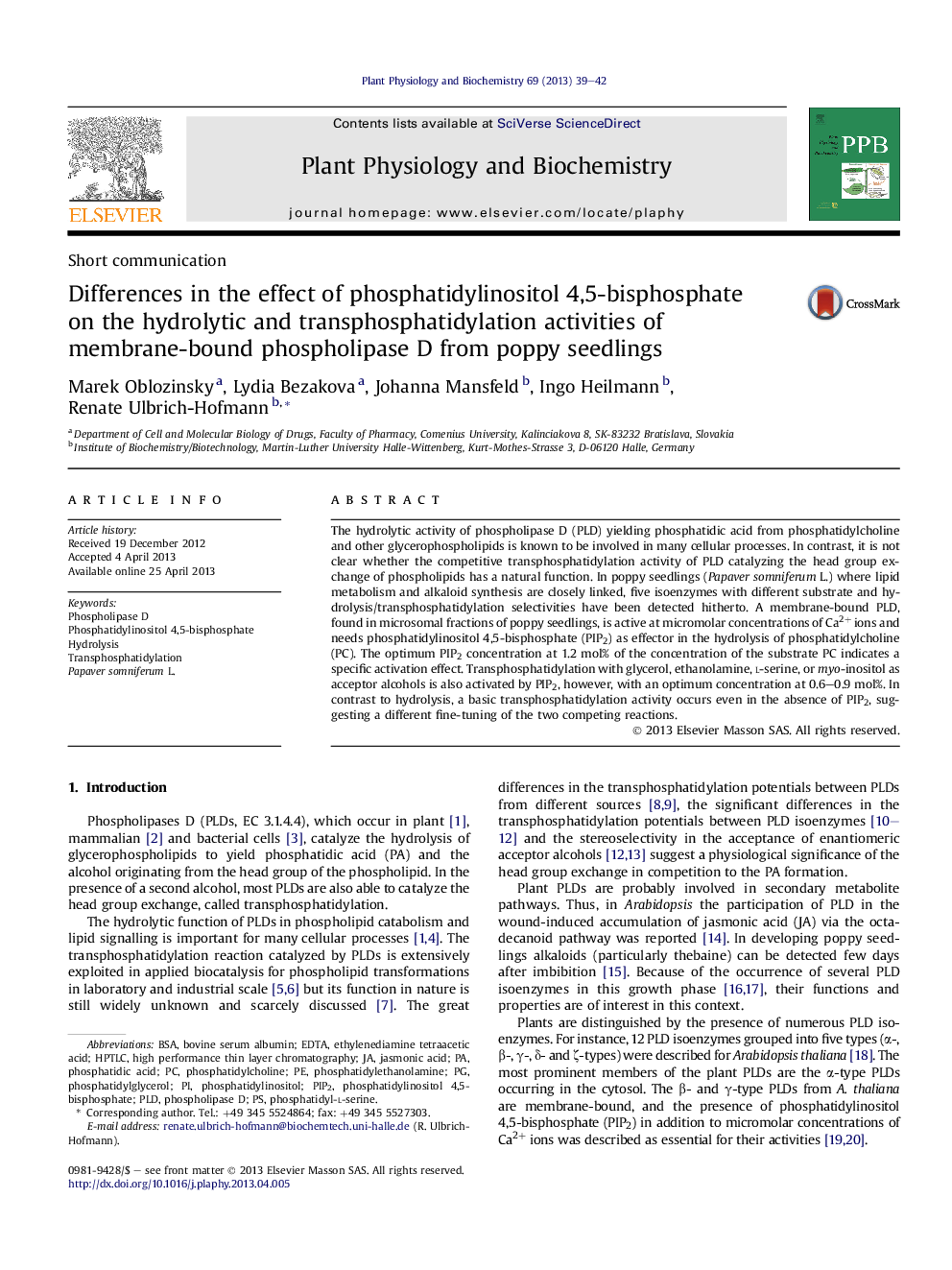| Article ID | Journal | Published Year | Pages | File Type |
|---|---|---|---|---|
| 2014872 | Plant Physiology and Biochemistry | 2013 | 4 Pages |
•PIP2 is an activator of membrane-bound phospholipase D from poppy seedlings.•For the first time the PIP2 effect on the transphosphatidylation is studied.•In contrast to hydrolysis, transphosphatidylation is also possible without PIP2.•The effect of PIP2 is studied in the presence of different acceptor alcohols.•The results suggest a fine-regulation in hydrolysis and transphosphatidylation.
The hydrolytic activity of phospholipase D (PLD) yielding phosphatidic acid from phosphatidylcholine and other glycerophospholipids is known to be involved in many cellular processes. In contrast, it is not clear whether the competitive transphosphatidylation activity of PLD catalyzing the head group exchange of phospholipids has a natural function. In poppy seedlings (Papaver somniferum L.) where lipid metabolism and alkaloid synthesis are closely linked, five isoenzymes with different substrate and hydrolysis/transphosphatidylation selectivities have been detected hitherto. A membrane-bound PLD, found in microsomal fractions of poppy seedlings, is active at micromolar concentrations of Ca2+ ions and needs phosphatidylinositol 4,5-bisphosphate (PIP2) as effector in the hydrolysis of phosphatidylcholine (PC). The optimum PIP2 concentration at 1.2 mol% of the concentration of the substrate PC indicates a specific activation effect. Transphosphatidylation with glycerol, ethanolamine, l-serine, or myo-inositol as acceptor alcohols is also activated by PIP2, however, with an optimum concentration at 0.6–0.9 mol%. In contrast to hydrolysis, a basic transphosphatidylation activity occurs even in the absence of PIP2, suggesting a different fine-tuning of the two competing reactions.
